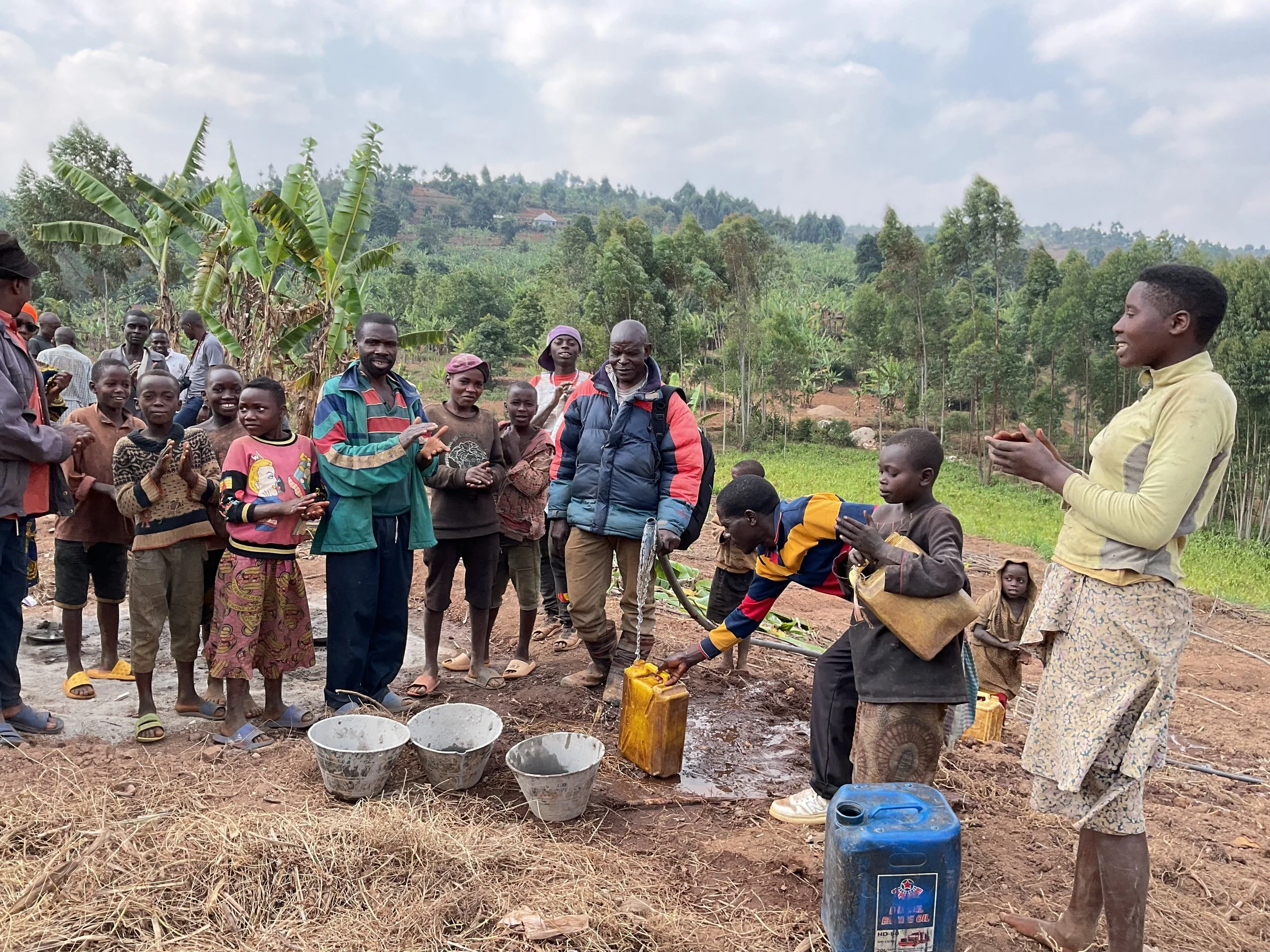PROJECT KICKOFF
We are pleased to announce that construction on Sovu-Rogongo water system #76 began on October 28, 2025. When it is complete, 950 people in the community will have daily access to clean water.
Currently, the community’s primary water source is more than 2 miles away and that water source is contaminated.
Preventable, water-borne diseases are the leading cause of death in Burundi, which has had the 12th highest child mortality rate globally. The good news is that communities with Gazelle Foundation water systems have drastically reduced, and in some cases eliminated, the presence of water-borne illnesses among the families that live in them.
WATER ACCESS PRIOR TO CLEAN WATER SYSTEM PARTNERSHIPS
Reliable, year-round access to clean water in Mugano Colline within the Matana Commune in Bururi Province (similar to a U.S. state) in southwest Burundi was previously served by the Kibarazi River, a muddy stream most of the year and part of the Congo River watershed. This small river and other seasonal pools were shared with livestock and wildlife. Waterborne diseases such as schistosomiasis, bacterial or protozoal diarrhea, hepatitis A, typhoid fever, dengue fever, and malaria were all too common.
Building sustainable water systems breaks the cycle of poor health and poverty. The fact is, that preventable, waterborne diseases are still a leading cause of death in Burundi.
Clean water means clear futures for Mugano Colline residents whose young people can pursue education while their families can devote more time to farming and other economic activities to strengthen their community’s long-term resilience. Access to clean and safe water for their daily use ensures environmental, economic, and social health, an important legacy of sustainability that is built into each project.
Project Overview
Construction dates: October 28, 2025 - January 15, 2025
Located in Burunga Province, Bihanga Colline of Matana Commune
Scope: 2,560km pipeline
3 storage tanks
7 tap stands
Employees: 45 workers including masons and plumbers
Serves 950 residents
Project Schematic
HOW IT WORKS
Water is captured from a source before it can become contaminated. It is filtered in the collection chamber and flows onward. Entrenched PVC pipe carries clean water to tanks and to multiple water tap stands.
Tap stands are strategically positioned within easy walking distance to schools, churches, community centers, and other central locations to maximize access points for residents. Water is available at no charge to all people regardless of the person’s tribe or religion.
Follow our progress on Facebook and Instagram for the most up-to-date details.
Transporting supplies to the construction site. Hiring local workers for the projects also develops local knowledge for upkeep and maintenance, as the ownership of all water systems are turned over to the community upon completion.
Once the collection chamber is complete clean water is available via distribution pipeline. For many its the first time they have easy access to clean, safe water.
Economic Benefits of Clean Water Investment
According to the World Health Organization, every dollar invested in clean water yields $4 - $12 in economic returns. In Burundi, building water systems provides jobs and stimulates local economies in a country with one of the highest unemployment rates in the world, where a majority of the population makes their living through subsistence agriculture, and where the average family lives on less than $600 a year.
For this project, 45 local workers have been hired to help with system construction, including masons and plumbers. We also purchase supplies and materials locally, giving the community’s economy a further boost. Learn more about our on-the-ground project manager.
Our Process
Our project manager in Burundi oversees every aspect of the project from purchasing supplies to the transportation of materials and tools to the job site to hiring workers, construction, testing, and handover of the system to the beneficiary community upon completion. Discover a comprehensive look at the engineering and steps donors like you make possible. >>
Our team in the United States is in regular contact with the project manager to verify that construction is on time, and on budget using reports, photographs, GPS, and receipts. Our team documents GPS coordinates of each component of the water system.
Construction Updates
INTERIM PROJECT UPDATE: 1
Jean Bosco Ndabaniwe, our onsite project manager, reports progress on Sovu-Rogogo water system is moving along on time and on budget. Pictures of project progress have been received by the Gazelle Foundation, including receipts for all materials and full accounting of all expenses verified by the Gazelle Foundation. As of December 9, 2025, six weeks into construction milestones completed include:
Source catchment is complete
Collection chamber is complete
2 (of 7) tap stands are complete
Digging trenches is around 1.5km
Connection of pipes is around 1.2km








JOIN OUR MISSION
This project was funded by a single generous and thoughtful donor. We thank this generous donor for changing the lives of the people in this community through access to clean water.
Our next water system depends on you! Help us give the gift of clean water to those that need it most.







